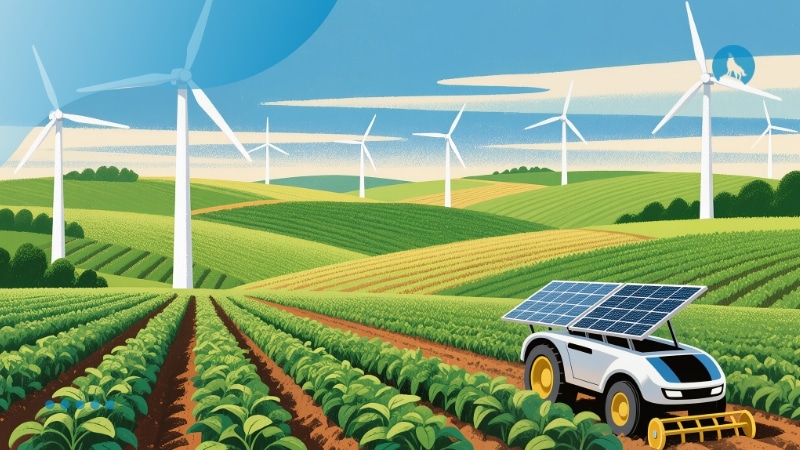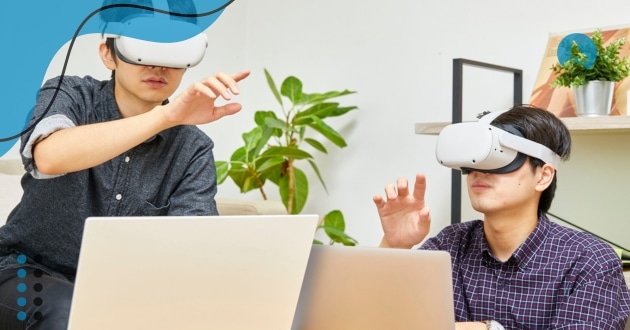Latest emerging technology trends this year are not only transforming industries but also redefining how people live, work, and interact with one another.
From artificial intelligence breakthroughs to sustainable innovations, the landscape is evolving faster than ever before. Understanding these trends is essential for businesses, professionals, and everyday users who want to stay ahead of the curve.
In 2025, technology is not just about convenience; it is about resilience, sustainability, and creativity. The latest emerging technology trends this year showcase a future where human needs and digital advancements converge seamlessly. Whether it is smarter healthcare, greener energy solutions, or hyper-personalized digital experiences, these innovations are reshaping every sector of society.
What makes this year remarkable is the pace at which adoption is happening. In previous decades, groundbreaking technologies would take years to reach mass markets.
Now, due to interconnected ecosystems, rapid prototyping, and global demand, trends spread globally within months. Consequently, following the latest emerging technology trends this year is not a luxury but a necessity for anyone seeking competitive advantage.
Artificial Intelligence and Generative Models
One of the strongest forces driving technological change in 2025 is artificial intelligence. While AI has been evolving for decades, its new generation, particularly generative models, has entered mainstream industries. The latest emerging technology trends this year highlight AI’s expansion into creative fields, from generating marketing campaigns to producing original music and art.
Moreover, AI is no longer limited to abstract research; it is being embedded in daily decision-making. For example, healthcare systems are adopting AI-driven diagnostics that predict diseases earlier, reducing costs and saving lives. In the financial sector, advanced algorithms detect fraudulent activities instantly, while logistics companies use predictive models to anticipate demand and optimize delivery routes. Consequently, what once was experimental is now mission-critical for global industries.
At the same time, the U.S. Job Market reflects the profound impact of artificial intelligence. On one hand, automation and generative AI tools are replacing repetitive, low-value tasks, reshaping traditional employment structures.
On the other hand, entirely new categories of jobs are emerging, such as AI ethicists, data trainers, and prompt engineers. Therefore, instead of eliminating work, AI is redistributing opportunities, demanding workers to reskill and adapt continuously.
Another remarkable transformation is in creative industries. Writers, designers, and filmmakers are experimenting with AI to co-create content. While skeptics argue that this diminishes human originality, many professionals see it as a tool for accelerating workflows and expanding imagination.
In addition, generative AI platforms are being used by small businesses and freelancers, democratizing access to high-quality content creation that was once reserved for large corporations.
Quantum Computing Breakthroughs
Although once viewed as science fiction, quantum computing is making measurable progress. In 2025, several technology companies announced breakthroughs in error correction and scalability. This year marks the beginning of quantum solutions moving from research labs to enterprise pilot programs.
The latest emerging technology trends this year reveal how quantum power is being applied to solve problems classical computers struggle with. Pharmaceutical companies, for example, are using quantum simulations to accelerate drug discovery, reducing the time needed to test molecular structures. Energy corporations are exploring quantum optimization for managing smart grids and renewable resources more efficiently.
However, the road is not without challenges. Quantum hardware remains expensive and fragile, requiring highly controlled environments. Yet, cloud-based quantum services are making the technology more accessible, allowing businesses to experiment without building their own systems. The democratization of quantum resources is a defining step in this year’s technological story.
Green Tech and Sustainable Innovation

Another defining theme in 2025 is the integration of technology with sustainability. Consumers and governments alike demand greener solutions, and companies are responding with innovation. The latest emerging technology trends this year spotlight a surge in green tech, from renewable energy storage to biodegradable electronics.
Solar and wind technologies are achieving new efficiency milestones, thanks to AI-driven optimization and advanced materials. Meanwhile, smart agriculture platforms are using sensors and drones to reduce water waste and maximize crop yields. Even in consumer electronics, brands are experimenting with eco-friendly packaging and modular devices that extend product lifespans.
Importantly, sustainability is no longer a side project; it is a market expectation. Businesses that fail to adopt environmentally conscious practices risk losing customer trust.
Extended Reality and the Metaverse
Extended reality (XR), a combination of augmented reality, virtual reality, and mixed reality, continues to evolve in 2025. After a few experimental years, XR is now being integrated into practical use cases beyond gaming. The latest emerging technology trends this year include companies using XR for workforce training, remote collaboration, and immersive education.
Medical schools are adopting VR simulations to train surgeons without risk to patients. Retailers are offering AR try-on experiences, enabling customers to visualize products before purchase. In manufacturing, mixed reality tools assist technicians with real-time data overlays, improving accuracy and reducing errors.
Interestingly, the metaverse is undergoing a transformation. Instead of being just a virtual playground, it is increasingly becoming a professional ecosystem. Corporations host conferences in digital environments, while remote workers collaborate in immersive spaces that mimic physical offices. This hybrid reality is blurring the boundaries between physical and digital experiences.
Cybersecurity in a Hyperconnected World
As technology advances, so do threats. In 2025, cybersecurity is no longer an isolated department; it is a company-wide responsibility. The latest emerging technology trends this year emphasize advanced defense mechanisms powered by AI, biometrics, and blockchain.
Cybercriminals are using AI to launch more sophisticated attacks, but defenders are responding in kind. AI-based threat detection systems now analyze billions of data points in real-time, spotting anomalies that humans could never catch alone. Blockchain is enhancing supply chain transparency, ensuring data integrity and reducing fraud.
Furthermore, biometric security, such as facial recognition and behavioral analysis, is becoming mainstream. However, these solutions raise privacy concerns, prompting debates on striking a balance between safety and individual rights. Ultimately, organizations that prioritize cybersecurity are not only protecting assets but also building consumer trust in an era of constant digital exposure.
Biotechnology and Human Augmentation
The fusion of biology and technology is another exciting frontier. The latest emerging technology trends this year include biotech innovations that push the boundaries of healthcare, agriculture, and even human potential.
Gene editing tools like CRISPR are advancing faster than expected, offering solutions for genetic disorders once deemed incurable. Personalized medicine is becoming reality, with treatments tailored to individual DNA profiles. On the agricultural side, lab-grown meat and genetically enhanced crops are being scaled to meet global food demands sustainably.
Human augmentation technologies, including brain-computer interfaces and advanced prosthetics, are enhancing capabilities for people with disabilities while opening philosophical debates about the future of humanity. What does it mean to be human when technology can enhance our senses, strength, or intelligence? Such questions define the intersection of science and ethics in 2025.
The Rise of Edge and 6G Connectivity
Connectivity underpins all innovations. After the global rollout of 5G, attention is shifting toward 6G and edge computing. The latest emerging technology trends this year demonstrate how these technologies are creating faster, more reliable, and more decentralized digital ecosystems.
Edge computing reduces latency by processing data closer to its source. This enables real-time applications like autonomous driving, remote surgery, and industrial automation. Meanwhile, 6G promises ultra-fast connections, supporting immersive experiences and massive IoT deployments.
The combination of these technologies is not only making digital services faster but also more resilient. As networks expand, they will support billions of devices seamlessly, paving the way for smart cities and intelligent infrastructure worldwide.
Conclusion
Looking at the latest emerging technology trends this year, one thing becomes clear: the future is already here. These innovations, spanning AI, quantum computing, green tech, XR, cybersecurity, biotechnology, and advanced connectivity, are not isolated phenomena. They are interwoven threads shaping a digital, sustainable, and interconnected society.
Furthermore, the pace at which these technologies are being adopted indicates that businesses and individuals cannot afford to remain passive observers. For companies, keeping pace means more than adopting tools; it requires cultural readiness, flexible leadership, and a willingness to rethink business models. For individuals, it means embracing lifelong learning, cultivating digital literacy, and being open to reskilling as industries evolve.
At the same time, challenges such as ethical dilemmas, job displacement, and privacy concerns must not be overlooked. The U.S. Job Market, for instance, is already experiencing structural changes as AI reshapes industries. Policymakers, educators, and entrepreneurs need to collaborate to ensure that innovation benefits society as a whole rather than creating deeper inequalities.
In addition, global organizations such as the World Economic Forum emphasize that emerging technologies should be approached with a balance between opportunity and responsibility. Their insights highlight how governments and private sectors must work together to establish governance frameworks, promote sustainable growth, and ensure inclusivity in the digital age.



